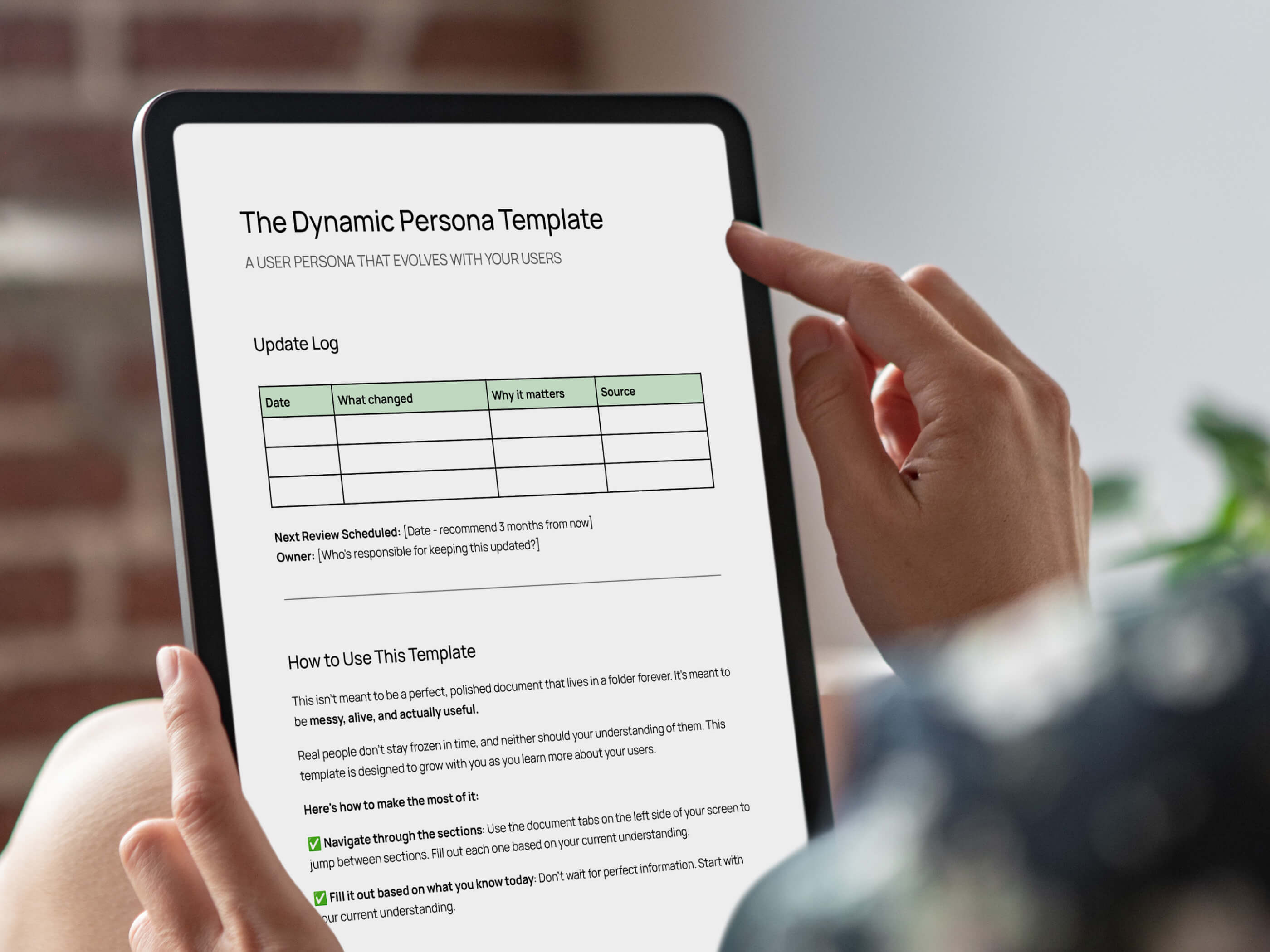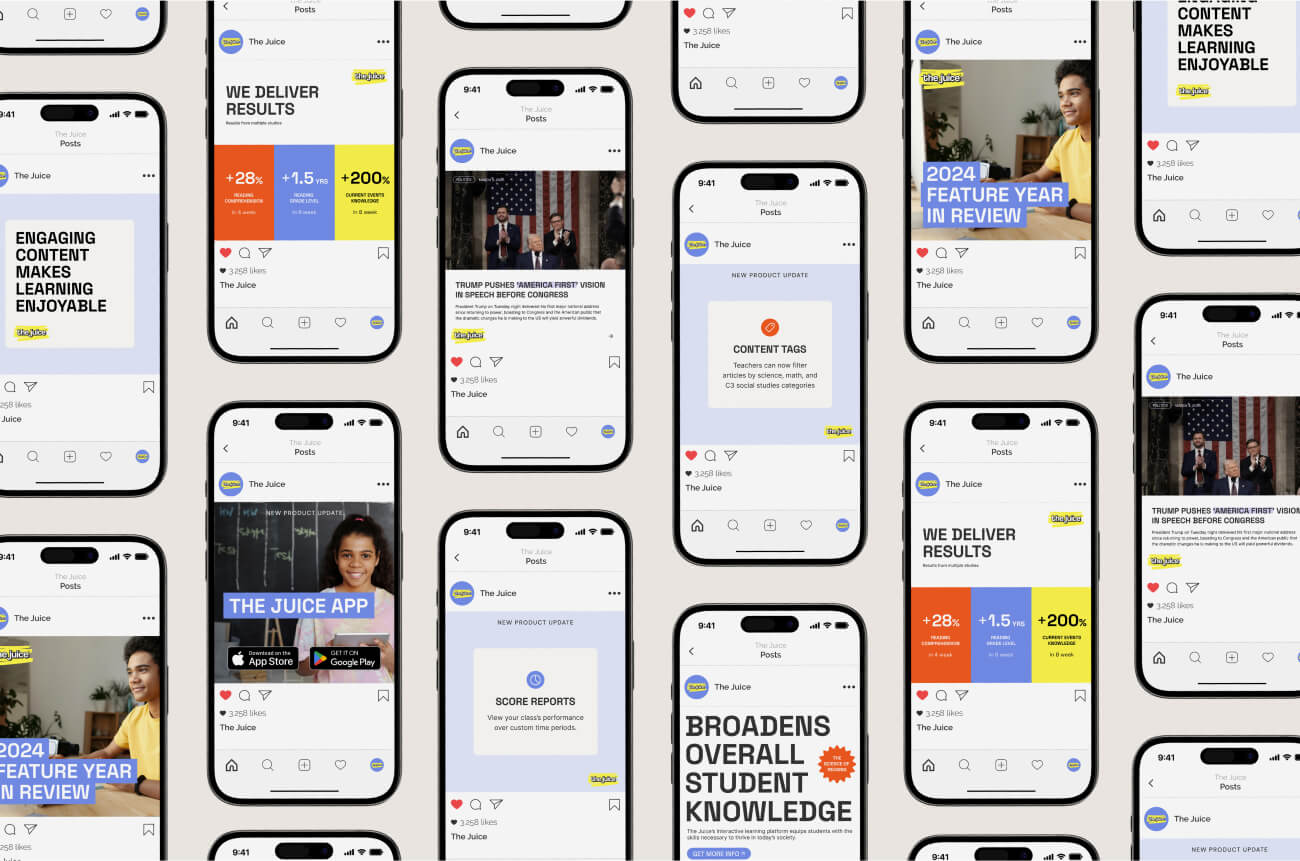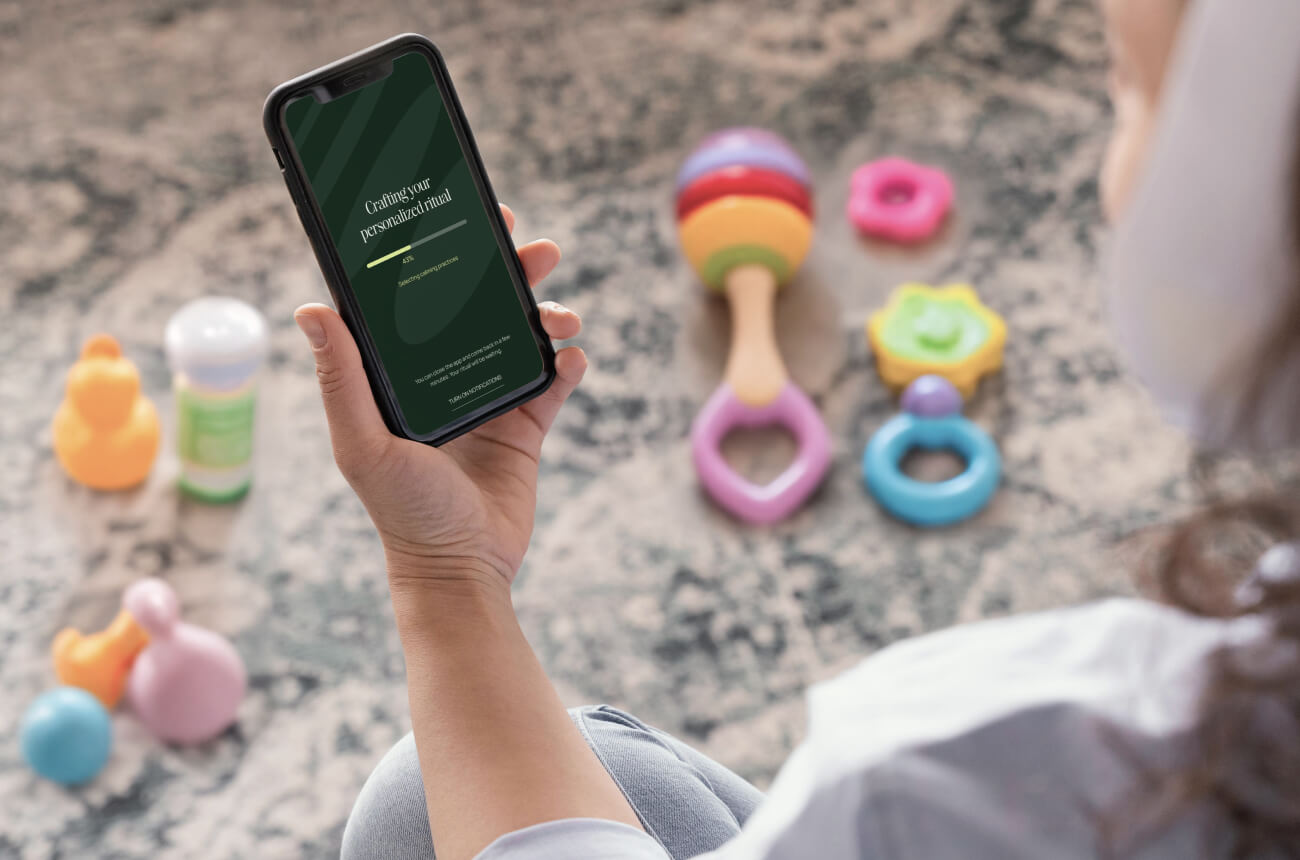Link copied to clipboard

Let me guess: Your user persona is named Sarah. She's 34, married with two kids (ages 3 and 6), works part-time in marketing, lives in a suburban home, and "values convenience and quality time with family."
Sound familiar?
Here's the thing: I've built user personas with dozens of family tech startups over the years, and I've seen the same pattern play out again and again. We create these beautiful, well-researched personas together. The team gets excited. Everyone aligns around Sarah and her needs. And then... six months later, I check in and the persona is gathering dust in a Figma file while the team makes decisions based on gut feeling.
User personas aren't the problem. How we use them is.
When done well (and kept alive), personas are incredibly valuable. They help teams align on who you're building for, they put a human face on data, and they keep everyone focused on real user needs instead of just what's technically possible. I genuinely believe in them, which is why I help clients create them.
But here's what I've learned after 20+ years of designing family-focused products: Real families are so much messier, more complicated, and more interesting than these tidy personas suggest. And if your persona stays frozen in time while your understanding of your users evolves, it becomes worse than useless. It becomes a beautiful artifact that quietly stops reflecting reality.
The problem isn't creating personas. It's treating them like they're finished.
I see this constantly with the startups I work with: We do thorough user research during discovery. We create detailed, nuanced personas based on real interviews and data. The founder loves them. The team references them in early product decisions.
But then life happens. The product launches. Users behave in unexpected ways. The market shifts. The founder learns things from customer support tickets that weren't in the original research. And Sarah? She stays 34 with two kids, forever stuck in her suburban home with her part-time marketing job.
Meanwhile, your actual users are living, changing, evolving humans.
That "part-time marketing job" might have become three different freelance gigs when the economy shifted. One of those kids might have been diagnosed with ADHD, completely changing how she approaches educational apps. Her mother might have moved in after a health crisis, adding caregiving to her already full plate. She might have gone through a divorce, a career change, or discovered she's pregnant with number three.
Real families have stepkids, aging parents, neurodiverse children, chronic illness, cultural transitions, financial stress, and about seventeen other things happening simultaneously that even the best initial persona can't fully predict.
And in family tech and women's health tech, these aren't minor details. They're the exact factors that determine whether your product fits into someone's life or gets abandoned after the first week.
Even when I help clients create really solid, research-based personas, there are things that typically get left out or fade over time:
The interrupted usage patterns. We might note that your user "values convenience," but the persona doesn't fully capture what I've seen in usability testing: She's not thoughtfully exploring your app with a cup of coffee. She's checking it while standing in line at the pharmacy, hiding in the bathroom for 90 seconds of peace, or with one eye on a toddler who's suspiciously quiet. This matters enormously for your UX design for families, and it's something you only truly understand by watching real usage over time.
The evolving trust barriers. Your initial persona tells you demographics and goals, but it can't predict that your user will get burned by a competitor's privacy breach three months after launch. It doesn't capture how her trust threshold changes based on accumulated experiences. Not just with your product, but with every digital product for families she tries. Trust shifts. Your understanding needs to shift with it.
The constraints that won't sit still. We write "values convenience" or "time-constrained," but what does that actually mean this month versus next month? Managing a kid with new food allergies, dealing with a sudden childcare crisis, juggling new eldercare responsibilities. The constraints aren't fixed. The persona we created six months ago can't account for the life changes your users have experienced since then.
The emotional weight that compounds. In our initial research, we capture goals like "wants to find healthy recipes" or "looking for educational activities." But ongoing conversations with users reveal deeper layers: the guilt that intensifies over time, the anxiety of wondering if she's doing enough, the exhaustion that makes even simple decisions feel impossible. These emotions aren't static. They evolve with experience.
This is the stuff I see when I come back to audit a startup's design six months post-launch. The persona was good. But it didn't grow with them.
So what's the solution? Making personas living documents that evolve with your learning. Here's what I recommend to clients:
Build in a review rhythm from day one. When we create personas together, I tell founders: "These represent what we know today. Let's plan to revisit them quarterly." Set calendar reminders. Assign an owner. Treat updates as seriously as you treat product roadmap planning. The best clients I work with have "persona check-ins" built into their sprint reviews.
Layer in scenarios and real-world context. Don't just describe who Sarah is. Describe her day. I often help clients create "day in the life" scenarios that accompany personas. What does it look like when she's trying to use your app during a tantrum? After being up since 5am? While comparing you to her sister's recommendation? These scenarios expose assumptions and make the persona feel real to your whole team.
Explicitly include trust signals and barriers. For family-focused products, trust isn't a feature. It's the foundation. When I build personas with clients, we dedicate a whole section to trust: What builds it? What destroys it? What past experiences shape her skepticism? Then we update this section as we learn what actually drives conversions and retention.
Design for diversity from the start. I push every client to create multiple personas that reflect actual family diversity. Blended families, single parents, multi-generational households, LGBTQ+ families, families with neurodiverse members, families managing chronic conditions. If all your personas look like nuclear suburban families, you're designing for a narrow slice of your actual market.
Connect personas to real user feedback. The personas that stay relevant are the ones connected to ongoing user research. When I work with clients long-term, we tie persona updates to usability testing, support tickets, user interviews, and community feedback. Every touchpoint either confirms the persona or signals it's time to evolve it.
Make them visible and actionable. A persona that lives in a beautiful PDF is just documentation. Put them where your team actually works: project management tools, design files, Slack channels. The best teams I've worked with have persona cards printed and pinned above desks, referenced in every product discussion.
I know what you're thinking: "This all makes sense, but how do I actually make updating personas part of my workflow?"
That's exactly why I created the Dynamic Persona Template.
It's a simple Google Doc designed to be updated easily. No complicated tools, no extra logins—just a thoughtful structure that makes it simple to capture what matters and revisit it as you learn. The format itself encourages updates, with built-in prompts and an update log that tracks what changed and why.
It's free, and it's yours.
[Get the Dynamic Persona Template →]
Here's what I want you to take away: User personas are valuable tools, but only if they grow with your understanding.
I build personas with clients because they work (when used right). They create alignment, build empathy, and guide better decisions. But the families you're serving aren't static, and your personas shouldn't be either.
The more you can keep your understanding current and evolving, the more likely you are to build something that works for users not just on launch day, but six months later when their lives look completely different.
Because Sarah the persona might look perfect in your pitch deck. But the real Sarahs out there? They're juggling too much to settle for anything less than a product that truly understands what they're up against. Today, next month, and a year from now.
And when you get that right? That's when you build a family tech product that people trust, adopt, stick with, and recommend to everyone they know.
That's the difference between a product that checks boxes and one that becomes an essential part of their lives.
.jpg)

